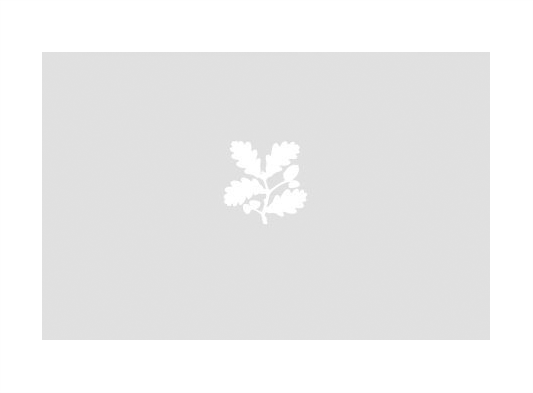The Lion of Lucerne
after Bertel Thorvaldsen (Gronnegade 1770 – Copenhagen 1844)
Category
Art / Sculpture
Date
c. 1850 - 1900
Materials
Resin (possibly, Unspecified
Place of origin
Switzerland
Collection
Cragside, Northumberland
NT 1231001
Summary
Sculpture, resin; the Lion of Lucerne; Swiss, after Bertel Thorvaldsen; c. 1850-1900. An ivory substitute cast (resin?) reproducing the so-called Lion Monument or Lion of Lucerne, a colossal relief carved into a rockface in the Swiss city of Lucerne, as a memorial to members of the Swiss Guard who died during the French revolution attempting to defend King Louis XVI in the Tuileries Palace.
Full description
An ivory substitute (resin?) sculpture depicting the Lion Monument or Lion of Lucerne, designed by Bertel Thorvaldsen and executed by Karl Ahorn into a rockface in Lucerne in 1820-21. A male lion lies recumbent upon a rock, its left paw over the edge, its head and right paw resting on a shield with the French fleur-de-lis and on a small pile of spears, behind which is a circular shield with the cross of the Swiss Federation. A commemorative inscription on the lower edge of the rock: HELVETIORUM FIDEI AC VIRTUTI (to the loyalty and bravery of the Swiss). Minor damage to end of left paw. The Lion of Lucerne, one of the most famous tourist sights in Switzerland, commemorates Swiss loyalty and valour. Since the 17th century the French royal family had been served by a regiment of Swiss Guards. In August 1792, revolutionaries stormed the Palace of the Tuileries where the French king Louis XVI had fdound shelter, protected by the Swiss Guards, who continued to fight on even after the king had been escorted to safety. Eventually overwhelmed, around 760 of the guards were massacred, whilst another 200 subsequently died in prison. Only around 100 guards escaped from the Tuileries. Conceived in 1818, the costs of creating the monument were funded by various European royal houses. It was designed by the Danish-born neo-classical sculptor Bertel Thorvaldsen who used, as the basis for his design, a type of recumbent lion that had first been developed by his rival Antonio Canova. Thorvaldsen made a plaster model, which was sent to Lucerne, but insisted the monument must be carved into rock rather than simply being cast in bronze. This carving was carried out in 1820-21 by Lucas Ahorn, a sculptor from Constance. Located amidst nature, the monument fitted perfectly the ethos of the then fashionable Romantic movement. It was from the start admired for its expressivity and pathos. There are two small reproductions of the monument at Cragside (for the other, NT 1231031), both made for the tourist market. Jeremy Warren April 2022
Provenance
Armstrong collection. Transferred by the Treasury to The National Trust in 1977 via the National Land Fund, aided by 3rd Baron Armstrong of Bamburgh and Cragside (1919 - 1987).
Marks and inscriptions
On front of base:: HELVETIORUM FIDEI AC VIRTUTI
Makers and roles
after Bertel Thorvaldsen (Gronnegade 1770 – Copenhagen 1844), sculptor
References
Grandesso 2015: Stefano Grandesso, Bertel Thorvaldsen (1770-1844), Milan 2015, pp. 158-59, fig. 204.
